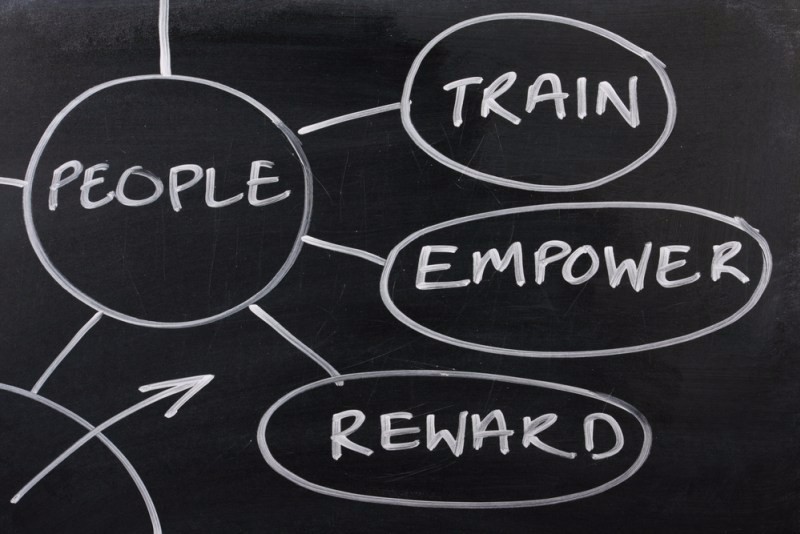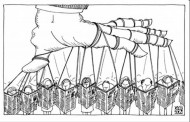By Jaquelyn Burton (Coeval) Why with all the requirements, regulations, and best practices in place do so many mariners die needlessly each year – under completely preventable circumstances? Take for example enclosed spaces. Why do so many mariners still die in enclosed spaces? With training requirements in place for more than 40 years, the deaths still continue.Training by Thinglass via Shutterstock
With estimates from the U.S. Bureau of Labor Statistics suggesting that exposure to hazardous or oxygen-deficient environments killed four workers a week during 2014. Even with the new SOLAS regulations in 2015 that make vessels hold enclosed space entry drills once every two months.1 In the year since that the convention has been enacted, the deaths still continue.
One tragic event happened on board the Sally Ann C, in March of 2015 while she was carrying a cargo of sawn timber. According to the accident report the Chief Officer had been reported missing during a muster for a drill, so the crew started a search. “…during the search two junior ratings discovered the access to Cargo Hold No.3 open and looking inside noticed the Chief Officer lying at the base of the stairway on platform No.2” than “For unknown reasons the Chief Engineer then entered the enclosed space without wearing any protection against the atmosphere inside the cargo hold access. He subsequently collapsed and ended up lying on top of the Chief Officer on platform No.2. On hearing the cries for help from the Chief Engineer, the 2nd Officer then also entered the enclosed space without wearing any protection. He was overcome by the atmosphere inside the cargo hold access and collapsed.” Both the Chief Officer and the Chief Engineer died there, and the 2nd officer “suffered serious injuries.”
For hundreds of years, the dangers of enclosed spaces have been known. Even miners brought canaries down the shafts with them. If the canary died – it was time to leave. They also used candles – if the candle’s flame went down – they didn’t stay either.2 They did not understand why those spaces were dangerous, but they knew that they were – and took precautions.
While I was talking about this subject in preparation for writing this, an anecdote was related to me by Captain David Freer – “Everyone knew the dangers of entering tanks and other “confined” spaces but flirted with the danger anyway. Tanks generally were not tested before entry to ensure they were safe for entry. We would sniff the air stream coming out of a tank being ventilated, and if we didn’t detect an odor, men would enter and do whatever was needed in the tank. This practice was followed well into the 80’s in a lot of fleets. Deaths were not uncommon.”
The example from The Sally Ann C shows that this practice is still continuing. Mariners have undergone training, and have attended drills – they should know better. Yet they enter and die like a canary in a mine shaft – not even suspecting that they had been in any danger – thinking that it can’t happen to them.
Worse still are the mariners who die, trying to be a hero and attempting to rescue the mariner who entered so unwisely – they too die in the effort to make a rescue. These cases are not one-offs – they happen time and time again. Even every time you take a flight you are reminded to be sure to put on your oxygen mask before helping others.During my teenage years, I worked as a lifeguard, and one of the things that we were always told during all of our training and retraining was always to ensure and safeguard our safety – you cannot save or help someone if you become another victim. It will do the victim no good if you become a victim as well. Always assume that a danger they succumbed to could hurt you as well.
The methods of determining if space is safe to enter have come a long way since the canary and candle test days. Now we have sensors that can be lowered down to test the atmosphere and sensors that can be worn to warn people if the atmosphere becomes dangerous during their time in the space. We have better methods of ventilation where we can calculate the number of times that the air is exchanged. The requirements for making an enclosed space entry are well known. The best practices are published. The companies all have Safety Management Systems that are required to outline enclosed space entry requirements. Many companies also have computer based training systems that cover enclosed space entry. Even with all of these new advancements in technology, mariners are still dying.
Even this month, on the 5th of February, there had been an accident on the Araz River;3 that resulted in two mariners being hospitalized due to a toxic vapor while they were cleaning a tank.
So, why are they dying? Even with all of these preventative measures that are supposed to be taken, and all of the knowledge and training they are expected to have! Could it be that our approach to training is failing them? Could it be that we have a culture problem? Are we to blame?
If we as mariners don’t care about our safety and look out for each other – no amount of regulations, training, or placards would likely make a difference.
If you knew that in entering that space you might never come out again alive – would you risk it? Would you take the extra time to ensure that it was safe for entry before proceeding? How about if it wasn’t you, but shipmates. Shipmates who have people back home who depend on them. Would you take extra time to explain how dangerous these kinds of spaces can be? How would you explain it – how would you make sure that it sinks in?
Much of the training in the maritime industry is lecture based – attend class, sit through a lecture, take an exam. I do not believe this is the most effective way to learn and retain information over the long-term. If the training is adequate the way it has been done in the past, and in many cases is still being conducted – wouldn’t these deaths have been prevented? What could be a better way to approach training, could empathy be the key?
According to Kim Hermanson, Ph.D. “Adults learn by constructing meaning from their experiences. Situations which aren’t viewed as meaningful are typically rejected as a source of learning. An important aspect of these meaningful learning experiences is that they not only involve one’s intellectual faculties, but one’s emotional capacities as well.”
Empathy is what it would take to improve safety onboard. The type of insight that places you and your shipmates right in the shoes of all those accident reports – all of those poor souls that were lost for nothing.
The involvement of empathy and active learning is suspected to be much better at creating the retention of knowledge than lectures alone. We as mariners must take action to become more effective students and teachers.
We must strive to become better students – studying best practices. We must be open to discussion and disagreements; it is the way to find better methods.
Finally, we must strive to become better teachers; bringing empathy, examples, stories and sharing meaning. Because, when we run drills, or give lectures, or give familiarizations, and instruct cadets – we are all teachers – and what we teach could save a life, or many.
Find out more about us at Coeval.us training for the #modernmariner.
1 SOLAS regulation III/19
2 Complete Confined Spaces Handbook, By John F. Rekus
3 IMO Incident Ref. C0010167
|
88.8K 45 SHARES |
|
Related Articles
Training Ship Empire State VI Like You’ve Never Seen Before [VIDEO]
gCaptain Visits Rolls-Royce’s Ålesund Training Facility
Marine Flares – More Than Meets the Eye
LNG Fire Safety – Ships and Terminals
Maritime Monday; September 12, 2011
Recommended For You
Incident Photos: Tanker and Containership in Head-On Collision Off Jebel Ali
MARAD Issues Warning of Potential Attacks by Extremists
People Are Saying This New Mega Sailing Yacht is the Ugliest Vessel Ever Built
Maritime Monday for August 12th, 2013: Movies About Ships, Part V
















